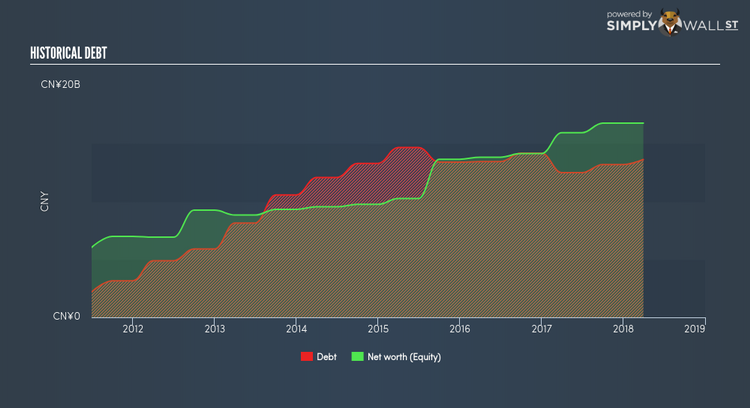Is Zhaojin Mining Industry Company Limited (HKG:1818) A Financially Sound Company?

Small-caps and large-caps are wildly popular among investors; however, mid-cap stocks, such as Zhaojin Mining Industry Company Limited (SEHK:1818) with a market-capitalization of HK$21.26B, rarely draw their attention. While they are less talked about as an investment category, mid-cap risk-adjusted returns have generally been better than more commonly focused stocks that fall into the small- or large-cap categories. This article will examine 1818’s financial liquidity and debt levels to get an idea of whether the company can deal with cyclical downturns and maintain funds to accommodate strategic spending for future growth. Remember this is a very top-level look that focuses exclusively on financial health, so I recommend a deeper analysis into 1818 here. View our latest analysis for Zhaojin Mining Industry
Does 1818 generate enough cash through operations?
1818’s debt levels have fallen from CN¥14.17B to CN¥13.19B over the last 12 months – this includes both the current and long-term debt. With this debt repayment, 1818’s cash and short-term investments stands at CN¥2.13B , ready to deploy into the business. On top of this, 1818 has generated CN¥1.07B in operating cash flow during the same period of time, resulting in an operating cash to total debt ratio of 8.09%, indicating that 1818’s current level of operating cash is not high enough to cover debt. This ratio can also be interpreted as a measure of efficiency as an alternative to return on assets. In 1818’s case, it is able to generate 0.081x cash from its debt capital.
Does 1818’s liquid assets cover its short-term commitments?
At the current liabilities level of CN¥13.78B liabilities, it appears that the company has not been able to meet these commitments with a current assets level of CN¥8.04B, leading to a 0.58x current account ratio. which is under the appropriate industry ratio of 3x.
Is 1818’s debt level acceptable?
1818 is a relatively highly levered company with a debt-to-equity of 81.29%. This is not unusual for mid-caps as debt tends to be a cheaper and faster source of funding for some businesses. We can test if 1818’s debt levels are sustainable by measuring interest payments against earnings of a company. Ideally, earnings before interest and tax (EBIT) should cover net interest by at least three times. For 1818, the ratio of 2.67x suggests that interest is not strongly covered, which means that lenders may refuse to lend the company more money, as it is seen as too risky in terms of default.
Next Steps:
1818’s high debt levels is not met with high cash flow coverage. This leaves room for improvement in terms of debt management and operational efficiency. In addition to this, its lack of liquidity raises questions over current asset management practices for the mid-cap. I admit this is a fairly basic analysis for 1818’s financial health. Other important fundamentals need to be considered alongside. You should continue to research Zhaojin Mining Industry to get a more holistic view of the stock by looking at:
Future Outlook: What are well-informed industry analysts predicting for 1818’s future growth? Take a look at our free research report of analyst consensus for 1818’s outlook.
Valuation: What is 1818 worth today? Is the stock undervalued, even when its growth outlook is factored into its intrinsic value? The intrinsic value infographic in our free research report helps visualize whether 1818 is currently mispriced by the market.
Other High-Performing Stocks: Are there other stocks that provide better prospects with proven track records? Explore our free list of these great stocks here.
To help readers see pass the short term volatility of the financial market, we aim to bring you a long-term focused research analysis purely driven by fundamental data. Note that our analysis does not factor in the latest price sensitive company announcements.
The author is an independent contributor and at the time of publication had no position in the stocks mentioned.

